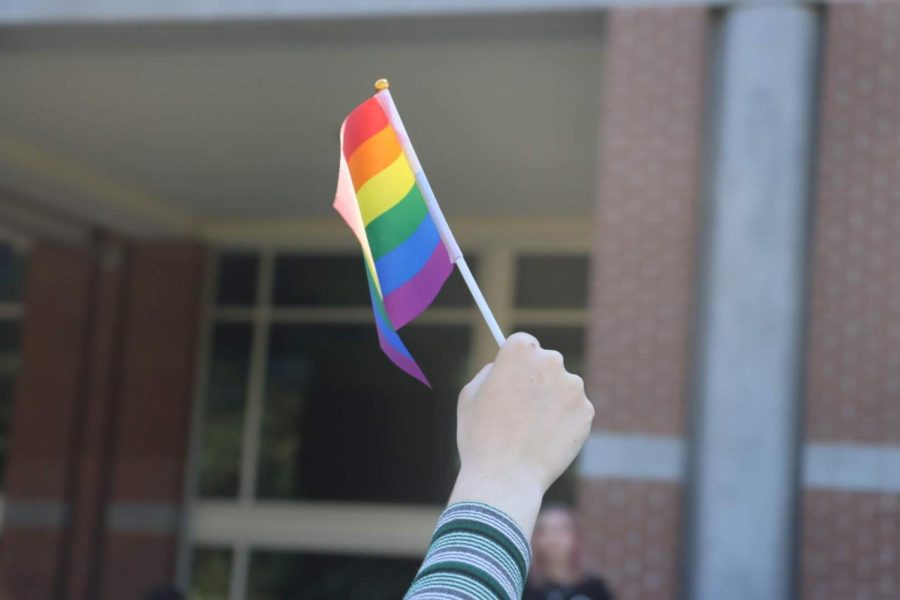Voter suppression – Seems to be plaguing our modern day elections. Anybody and everybody is susceptible to voter suppression and it is a very relevant matter in present day America.
To help get a better understanding of what Voter Suppression is and understanding it, Enrijeta Shino, a UNF Professor of Political Science, sat down for a Zoom interview with Spinnaker.
What exactly is voter suppression?
“Voter suppression is a way to discourage legitimate voters from casting their ballot,” Shino said.
Minorities, people of color, younger/newer voters, old voters, and disabled voters are often the most, but rarely the sole target of suppression.
Voter suppression is not a new issue. The most well-known example of Voter Suppression would be the Jim Crow laws. The Jim Crow laws were state laws that featured heavy discrimination against African-Americans. Such laws included segregation, outlawing interracial marriage, among many other discrimanatory policies.
These laws were implemented right after the Civil War and Reconstruction ended, and remained that way for one hundred years until the passage of the Voting Rights Act of 1965, which protected people’s right to vote. But that wasn’t the only way voters of color were suppressed. The Klu Klux Klan, the infamous white supremacy group, was, notorious for harassing and discouraging African-Americans from voting, usually through fear and other terrorist tactics.
While many may think that voter suppression ended there in 1965, that can’t be further from the truth. Whilst the Voting Rights Act was a great step in the right direction, there have been numerous attempts at circumventing its safeguards, and some to invalidate it entirely.
Professor Shino elaborated on this, explaining how that in the Civil Rights Act, there was a provision in it that any state with a history of discrimination, must get any and all changes to their voting procedures approved by the Federal Government. This key provision was just recently struck down by the Supreme Court in Shelby County v Holder in 2013. This basically gave any and all states the freedom to modify their voting procedures without any sort of federal oversight, and as a result, attempts at voter suppression have skyrocketed.
There are many forms and ways to suppress voters, and here are some, but certainly not all, of the ways it can be, and is, done.
1.) Strict Registration Laws:
This policy is where all info on voter registration must be identical with other official documents. That means if you use a preferred name, or you’ve moved since you last registered to vote, among other things, then your registration would not match with the state records, and your vote would be suspended. Georgia is well-known for such a burdensome requirement.
2.) Voter ID Laws:
The most common form of voter suppression, implemented to varying degrees in over half the states. These laws require that some form of ID be required at polling places. Some states have even taken this further, requiring photo IDs. This means that if you don’t have a passport or Driver’s License available, then you basically won’t be able to vote.
3.) Voter Purges:
Purging occurs when a registered voter has been inactive for 2 elections in a row. After the second election in which they did not vote, their registration is suspended, meaning they must re-register again before they can vote again. While this does make sense for cases where voters pass away or move, It is often done for little to no reason, other than disenfranchising the voters, according to the American Civil Liberties Union.
4.) Mail-in Voting:
Mail-in voting is not inherently bad at all. Mail-in voting is often confused with absentee voting, and Professor Shino couldn’t stress this enough, they are in fact the same thing. It is actually a very secure and safe process. To vote by mail, you must have already registered. In addition, much like the registration laws, all info on the envelope you mail must match your registration information EXACTLY, otherwise it will not be counted. This incredible security means that fraud is not an issue with Mail-in voting. The issue is when leaders condition their voters into thinking that is the case, when it is farthest from the truth. This will make people more likely to not vote at all then vote by mail, which could be disastrous. You can read more about how fraud in mail-in voting is unlikely in this previous Spinnaker article.
A big victim of these tactics are younger people and first-time voters, who will often look at the process of voting by mail and registering in general as being too complicated. Many young people turn in their ballots late, when they must be turned in by 5p.m. on election day here in Florida.
Shino provided Spinnaker with many insightful sources, that have already been linked in the article, and a great interactive map from The Guardian, which gives insight into each state’s Voter Suppression Laws. She also gave a copy of a great piece on mail-in ballots she co-wrote for The Washington Post.
Knowledge is key, as is making sure you are already registered to vote. Professor Shino couldn’t be more clear with her call-to-action. You should get registered and vote, whether it be by mail or in person. And even then, you should take the steps and time to learn what restrictions there are in your state, so that your vote has the highest possible chance of getting counted.
__
For more information or news tips, or if you see an error in this story or have any compliments or concerns, contact editor@unfspinnaker.com.












